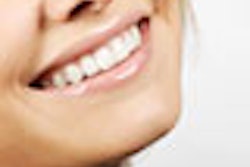
BOSTON - Sloppy impression making is one of the biggest problems facing dentistry today, Gordon Christensen, D.D.S., M.S., Ph.D., told attendees at the Yankee Dental Congress on Friday.
The critique was one in a litany the senior academic advisor at the Scottsdale Center for Dentistry offered -- along with some tips for improvement -- over a three-hour talk in a packed ballroom. All the while, he peppered his lecture with asides about the economy, cosmetic dentistry, and "bitchy, whiny, bleeding, barfing patients."
Dr. Christensen said he viewed improper teeth impressions as one of the profession's biggest problems. Ninety percent of impressions are defective, he claimed, adding that taking an impression of 14 teeth is the hardest thing he does in his practice. He prefers using custom trays over stock trays, but believes some of the more expensive stock trays, such as those lined with felt, can give excellent results.
Automatic mixers are best, Dr. Christensen said, adding that 3M's Pentamix 3 is easiest to use, gives more predictable results, and has the added advantage of being less contaminating than other mixers. He reminded dentists to clean debris off patients' teeth before making an impression and to make sure the material has plenty of time to set.
Dr. Christensen mentioned that Zhermack's Hydrogum alginate now has five days of stability, much longer than other materials used for impressions.
He endorsed digital impressions, predicting that they will eventually become the standard in the market.
On the subject of crowns, Dr. Christensen called tissue management "the void in the profession." He said dentists need to do more to prepare teeth for crowns, suggesting using double cords, a method he invented. Alternatively, he said that electrosurgery and lasers work well, noting that lasers make a wider cut.
As for crown materials, Dr. Christensen favors gold because it is long-lasting. It's what most dentists -- even cosmetic dentists -- have in their own mouths, he noted. So why don't they recommend it to their patients? Patients shouldn't worry about how it looks on posterior molars. "Unless you're in a pornographic movie, who cares?" he said.
Before putting any metal in a patient's mouth, however, it's important to ask about potential allergies. Dr. Christensen said he now asks patients on registration forms if their skin gets irritated when they wear jewelry. Women have many more allergic reactions than men, he said, with nearly half of women having a reaction to metal.
Paying attention to adhesives is critical, too, he said, warning that half of the materials used in crowns and bridge work don't stick to teeth. He suggested that dentists test materials in their own offices by putting adhesive on an old tooth and sticking it in water overnight.
Turning to the topic of implants, Dr. Christensen said he favors fiber posts because they have less chance of breaking. Zirconia posts, he said, can be too strong and can wind up being so inflexible that the tooth will break vertically.
He also likes pins made of pure titanium, which, surprisingly, can bend quite easily. "It's so strong, you could pull your boat with it," he said.
Copyright © 2009 DrBicuspid.com



















